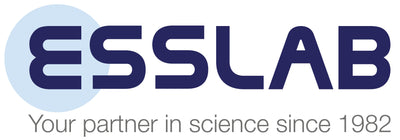EPA Standards Method 200.9 GFAA
- Home
- EPA Standards Method 200.9 GFAA
EPA Method 200.9 using graphite furnace atomic absorption (GFAA)
CRMs for use with method 200.9:

Specifications:
- GFAA method
- Applicable matrix: Ground waters, surface waters, drinking waters, sediments, soil, sludge and wastewaters
US EPA Method 200.9 is the "Determination of Trace Elements by Stabilized Temperature Graphite Furnace Atomic Absorption (GFAA)." This regulatory method is for analyzing 16 dissolved and total recoverable elements in ground water, surface water, drinking water, storm runoff, industrial and domestic wastewater, as well as in sediments, soils, and sludge. This page focuses on analysis of arsenic and lead in water using EPA Method 200.9
| 16 Trace Analytes Measured by EPA 200.9 | Matrix | |
|---|---|---|
|
|
|
Toxic metals with low maximum contaminant level (MCL) such as arsenic, or action level (AL) such as lead, cannot be analyzed by EPA 200.7, and need to be analyzed by EPA 200.8 (ICP-MS) and 200.9 (GFAA), which use instruments with lower detection limits.
Further Information:
Arsenic in drinking water and regulations
Arsenic occurs naturally in the environment and plants. Activities such as volcanic action, erosion of rocks, forest fires, and human agricultural and industrial activities promote arsenic contamination of the environment. Arsenic subsequently gets into drinking water through ground and surface water sources. Arsenic contamination in drinking water is still a problem in many developing and undeveloped countries. Human exposure to arsenic can cause various types of cancers, such as bladder, lungs, skin, kidneys, nasal passage, liver, and prostate. Other effects of long term arsenic exposure include stomach pain, vomiting, diarrhea, as well as numbness in hands and feet, partial paralysis, and even blindness. The World Health Organization (WHO) has placed arsenic in on the top 10 list of chemicals that are life threatening.
The EPA established a maximum contaminant level goal (MCLG) of zero for arsenic. On January 22, 2001 the EPA adopted a new standard (MCL) for arsenic in drinking water at 10µg/L. The rule became effective on February 22, 2002. The European and national drinking water quality standard for arsenic is also 10µg/L for arsenic. The determination of arsenic in drinking water is challenging, as the MCL for arsenic is close to the instrument detection limits. In addition, a variety of physical and chemical interferences can become problematic due to different arsenic species (inorganic and organic arsenic). Despite the difficulty, graphite furnace atomic absorption spectrometry is cost effective and provides sufficient sensitivity and little interference for arsenic measurements in drinking water for compliance monitoring using EPA Method 200.9.
Lead in drinking water and its regulations
Lead is on the World Health Organization's (WHO) top 10 threatening chemicals list. Lead can interfere with red blood cell chemistry and cause delays in normal physical and mental development in babies and young children. Long-term exposure can cause stroke, kidney disease, and certain forms of cancer. Lead is rarely found in source waters, but surface water can be polluted with lead from mining and smelting, which eventually can contaminate drinking water. But the corrosion of water pipes and fixtures are the greatest concern for lead contamination in drinking water. The most recent lead contamination of drinking water in Flint, Michigan , is caused by corrosion of the distribution pipes, failing to follow the EPA's Lead and Copper Rule by the local drinking water treatment facility.
The EPA set the maximum contaminant level goal (MCLG) for lead to zero. Since lead cannot be removed by the water processing system, in the Lead and Copper rule, the EPA set the lead action level at 15µg/L. If more than 10% of the tested tap water samples exceed this level, action must be taken to control corrosion and prevent serious lead contamination. The European and national drinking water quality standard for lead is also 10µg/L for arsenic. Due to the low action level, lead analysis in drinking water needs instruments with low detection limits. In addition to ICP-MS, graphite furnace atomic absorption spectrometry (GFAA) provides a powerful tool to achieve the sensitivity required for compliance monitoring, and provides a low-cost instrument for toxic metal analysis.
-
WHAT ARE YOU LOOKING FOR?Search
- Login / Register
- Reference Materials
- Liquid Handling
- Chromatography and Spectroscopy
- Testing
- Labware
- Resources
- Wishlist (0)
- Compare (0)
- Contact Us
